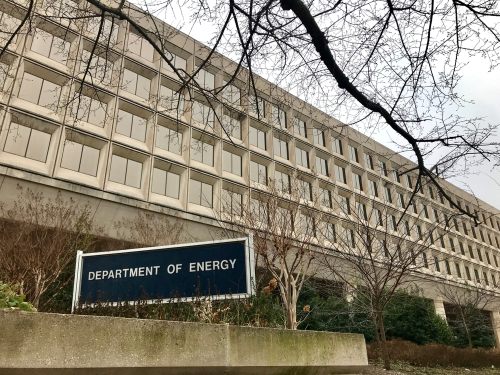DOE offers $65M funding opportunity to improve electric system through building efficiency, grid resilience

Through a funding opportunity announcement (FOA) known as Connected Communities, the United States Department of Energy (DOE) put up more than $65 million this week to expand the efficiency of grid-interactive building communities throughout the country.
The department says that connected communities would utilize the newest breakthroughs, such as modern sensors, controls, and analytics, to better manage and deploy grid-scale energy efficiency and distributed energy resources among homes and commercial buildings. By tapping technologies that allow energy-efficient buildings to communicate with one another and the grid, emissions could be reduced, and grid flexibility increased.
Homes and commercial buildings account for nearly 40 percent of U.S. energy and 74 percent of its electricity — not to mention the bulk of its peak electricity demand.
“As our Nation’s energy system continues to undergo dramatic transformations, there is a growing need for solutions that integrate and optimize all of our energy resources on the grid to provide Americans with the most reliable and affordable electricity possible,” Secretary of Energy Dan Brouillette said. “With today’s announcement, DOE will broaden its capability to evaluate and demonstrate the growing flexibility of one such solution—smart, grid-interactive, efficient buildings—to best serve the needs of building occupants and the grid while reducing energy consumption overall.”
Brouillette made the announcement at an event hosted by the Electric Power Research Institute (EPRI). EPRI’s president, Arshad Mansoor, made the case that more of the economy than ever is reliant on electricity to move and that this means clean energy is becoming increasingly important. Decarbonization will play a major part in that. However, both efforts would require improvements to grid resilience, which means modernizing in the way the DOE has proposed.
“This is an important step toward decarbonization which falls squarely within EPRI’s public benefit mission as more of the economy relies on the electric sector to grow and thrive,” Mansoor said. “Right now, one-third of our carbon emissions comes from the electric power industry. Another third comes from buildings, and the final third comes from transportation. By improving the efficiency of buildings, especially in the residential sector, we’re reducing emissions from two out of three sectors.”
In particular, Mansoor pointed to heating and cooling within these buildings. About 51 percent of total building energy use comes from heating and cooling by estimation, marking it as a prime area for improvement. This will be tested going forward, as FOA could increase the number of Office of Energy Efficiency and Renewable Energy supported testbeds by as many as five times.
